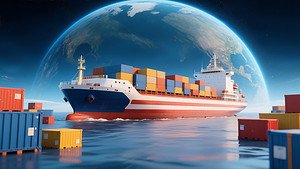0 Comments
1 category
The Hidden Killers of Manufacturing Exports: Logistics Risks That Erode Profits
Manufacturing exporters lose billions annually—not to competitors or market shifts, but to invisible logistics failures. A delayed customs clearance, a mislabeled pallet, or a damaged component in transit can erase 15-20% of profit margins overnight. These “hidden killers” thrive because they’re easy to overlook: they don’t appear on quarterly reports until it’s too late. For factories shipping electronics, machinery, or consumer goods from China to global markets, recognizing these risks isn’t just smart—it’s essential. Here’s how to spot and neutralize them.
1. Misclassified HS Codes: The Silent Duty Drain
Most exporters treat HS codes as a box-ticking exercise. Big mistake. A single digit error—classifying a “precision bearing” (8482) as a “general metal part” (8505)—can trigger 10-30% higher duties. Even worse, misclassification flags shipments for customs audits, delaying delivery by 5-10 days. This hits hard for time-sensitive orders: a missed production deadline for auto parts can cost $50,000 in penalties.
Fix: Use HS code classification tools (e.g., WCO database) paired with third-party audits for high-value goods. Partner with logistics providers who specialize in your product category—they’ll know that “LED displays” (9405) vs. “electronics assemblies” (8543) changes duty rates dramatically.
2. Inadequate Packaging: The Cost of “Good Enough”
Cardboard boxes and bubble wrap won’t protect machinery parts or electronics. A 2023 study found 12% of exported goods sustain transit damage, costing manufacturers $3.2 billion yearly. For fragile items—like semiconductor wafers or medical devices—damage rates jump to 25% with subpar packaging. Insurance covers some costs, but not the lost client trust or rush rework fees.
Fix: Invest in product-specific packaging: anti-static bags for circuit boards, foam-in-place crating for industrial valves, and shock-absorbing pallets for heavy machinery. Test packaging with ISTA 3A standards to simulate global shipping conditions—this alone reduces damage by 60%.
3. Poorly Managed LCL Shipments: The “Cheaper” Trap
Less-than-container-load (LCL) shipping seems cost-effective, but hidden fees (terminal handling, consolidation charges) often make it pricier than FCL for mid-sized orders. Worse, LCL shipments are 3x more likely to face delays—consolidation hubs in Shanghai or Singapore frequently misroute pallets, especially during peak seasons (August-October).
Fix: Use LCL with trusted forwarders who offer “direct consolidation” (no transshipment) and real-time tracking. For recurring orders, negotiate fixed-rate FCL contracts—even for partial loads, the predictability saves money long-term.

4. Compliance Gaps: The Regulatory Minefield
Exporting to the EU? A missing CE mark on machinery can halt delivery at Rotterdam. Shipping to the U.S.? ITAR regulations for aerospace parts require specialized licenses. Many manufacturers assume “incoterms” (FOB, CIF) protect them, but 40% of compliance fines fall on exporters due to incomplete documentation.
Fix: Conduct pre-shipment compliance audits. For high-risk markets (EU, U.S., Japan), use providers with in-house customs brokers who understand REACH, FDA, and JIS standards. Invest in digital documentation platforms to avoid paper-based errors.
5. Invisible Transit Delays: The Domino Effect
A 2-day port delay in Los Angeles can cascade into missed retail deadlines, storage fees ($100-$500/day), and air freight surcharges to recover time. These delays are often “invisible” until the shipment is stuck—weather, labor strikes, or congested rail yards rarely appear in initial timelines.
Fix: Use dynamic routing tools that adjust for disruptions (e.g., rerouting from Long Beach to Oakland during port congestion). For critical orders, build 3-5 day buffers into shipping schedules—this costs marginally more but avoids rush fees.
Why Generic Logistics Fail Manufacturers
Big freight companies prioritize volume over precision. They’ll ship a pallet of automotive parts the same way they ship clothing, ignoring the unique risks. Specialized manufacturing logistics partners, however, speak your language: they know a “machinery part” requires climate control, that “electronics” need anti-static handling, and that “just-in-time” isn’t a buzzword—it’s your production line’s lifeline.
The hidden killers of manufacturing exports thrive on complacency. By addressing HS codes, packaging, LCL management, compliance, and transit delays, you turn logistics from a cost center into a competitive edge.
Searching for “manufacturing export logistics,” “HS code classification for machinery,” or “damage-free shipping solutions”? Look for a partner that treats your products like their own—because in exports, the smallest details determine success.
Category: cost optimization
Related Posts
How to Reduce Warehouse Storage Costs: 3 Practical Strategies for Importers
How to Reduce Warehouse Storage Costs: 3 Practical Strategies for…
The Warehouse Manager’s Secret: How We Slashed International Shipping Costs by 43% (Without Slowing Down Deliveries)
The Warehouse Manager's Secret: How We Slashed International Shipping Costs…
New Vessel Glut: 5 Strategies to Negotiate Better Freight Rates
New Vessel Glut: 5 Strategies to Negotiate Better Freight Rates…
